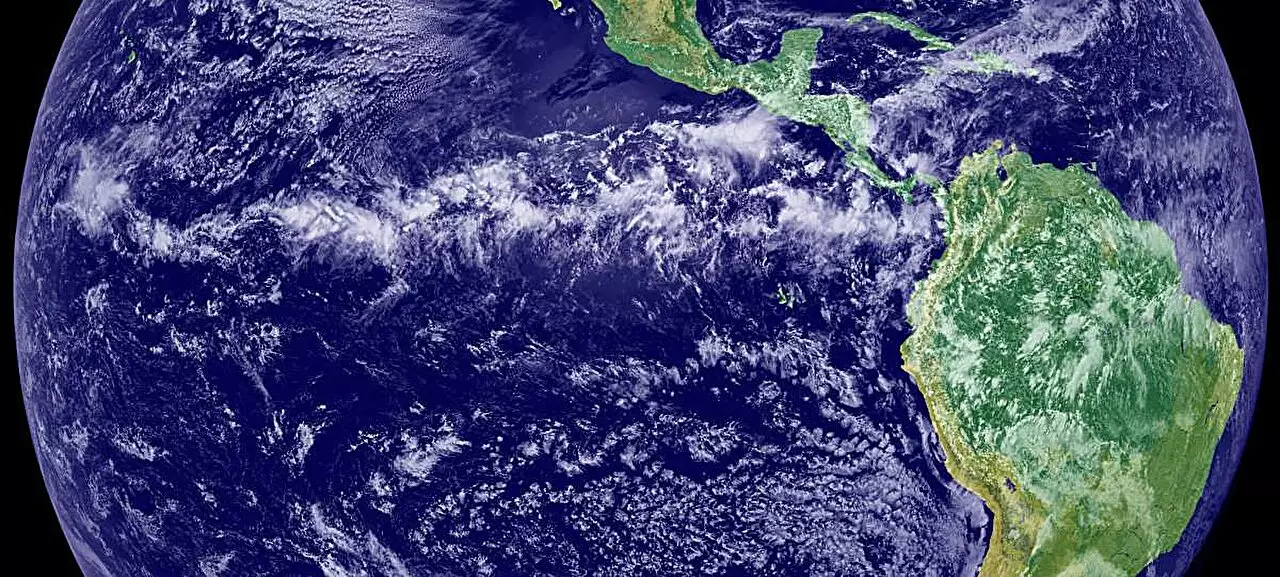The summer of 2024 will be remembered not just for its sweltering temperatures but for serving as a stark reminder of our planet’s changing climate. With unprecedented heat and dry conditions sweeping across regions, the implications for society have become increasingly dire. Weather anomalies, such as intense droughts and heat waves, have transformed landscapes, disrupted agriculture, and posed serious threats to public health. This phenomenon illustrates a concerning trend; summers have been progressively hotter and drier globally, particularly in the Northern Hemisphere.
The correlation between human activities and climate change has long been documented, but recent research has shed new light on the critical mechanisms at play. In particular, scientists have begun to unravel the link between human-induced emissions and the weakening of the Earth’s air circulation systems—vital networks that distribute heat and moisture across the globe.
At the heart of the Earth’s climate regulation are the air circulation systems, encompassing both storm tracks and the Hadley circulation. Storm tracks consist of weather systems that flow predominantly from west to east, responsible for the movement of heat and moisture across vast distances. This network is crucial for not only maintaining climate zones but also bringing cooler air from oceans onto land, especially during hot summer months.
On the other hand, the Hadley circulation describes a system where warm air rises at the equator, moves toward the poles, and descends in subtropical regions before returning to the equator. Changes in these circulation patterns can have severe implications for climate, affecting everything from rainfall patterns to temperature distribution.
Recent studies, including those spearheaded by Dr. Rei Chemke from the Weizmann Institute of Science, provide compelling evidence that human activities, particularly the emission of greenhouse gases, are significantly weakening these air circulation systems. Notably, previous research had linked the weakening of the Hadley circulation to anthropogenic factors, but Chemke and his collaborators have now established similar links concerning the storm tracks.
Their research indicates that emissions, such as carbon dioxide and aerosols, are warming the high latitudes more than the low latitudes. This alteration reduces the temperature gradient that drives storm tracks—thus, the systems become less vigorous. The implications are alarming; a decrease in storm intensity not only translates to less cool air reaching land but also contributes to the amplification of heat events on continents.
An essential aspect of understanding climate change is the evaluation of historical influences. In collaboration with Prof. Dim Coumou from Vrije Universiteit Amsterdam, Chemke’s findings reveal that the weakening of storm tracks since the 1980s aligns closely with the rise of human-induced emissions. The study highlights how incorporating historical emission data into climate models is crucial for accurately explaining these trends.
Moreover, the research employed complex simulations to explore natural climate factors, such as volcanic eruptions and solar activity, across the last millennium. These analyses pointed to a time when natural mechanisms largely strengthened the Hadley circulation. This historical context serves as a stark contrast to current conditions, where human influences dominate and disrupt the natural cycle.
One of the fascinating aspects of this research is its assertion that scientists have often overlooked the contribution of natural factors in the context of climate change. While the emphasis typically remains on human emissions, the study suggests that natural processes, although full-fledged in their effects, are operating in an antagonistic fashion compared to human impact.
As we grapple with pressing climate issues, it’s essential that climate models consider the full spectrum of influences—including both human and natural elements. This comprehensive understanding is vital for crafting effective strategies to mitigate climate change.
The findings brought to light by Dr. Chemke and his team represent a critical juncture in climate science. With the evident weakening of air circulation systems tied directly to human activities, the call to action has never been more urgent. Policymakers, scientists, and the public must recognize the imperative to reduce greenhouse gas emissions and actively engage in efforts to conserve the delicate balance of our climate system.
As summer temperatures reach unprecedented heights, it is crucial that we not only comprehend the intricate connections between our actions and the environment but also translate that knowledge into impactful change. The future of global climate systems hangs in the balance, waiting for a collective awakening to the looming challenges we face.


Leave a Reply